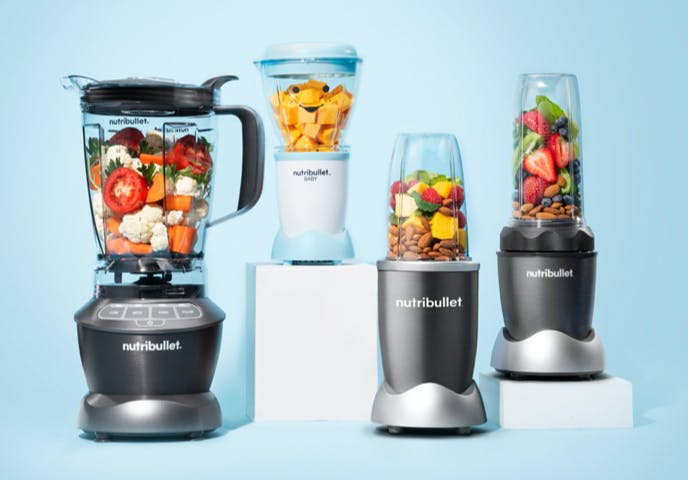The diet industry is swinging on a pendulum – from veganism and plant-based eating trends to paleo and keto diets – two extremes that view protein sources from what seems like two entirely different vantage points. If the polarity of the diet industry has your head spinning when it comes to protein, we’re hoping this will help. Today, we’re setting the record straight and breaking down the information on animal versus plant sources of protein so you can learn how to best fuel your body for optimal health.
As we’ve covered in previous posts, protein is an essential macronutrient needed for maintaining muscles and bones, supporting the immune system, and helping create enzymes and neurotransmitters that your body requires to go about its everyday business. Protein is found in a variety of whole foods, including plant sources such as lentils, beans, soy, and nuts, as well as animal sources such as meat and poultry, eggs, dairy, and seafood.
Here’s the lowdown on what you need to know about the two main types of protein sources.
“Complete” vs. “Incomplete” Proteins
The term “complete” protein refers to the foods that supply all nine essential amino acids that the body can’t synthesize on its own, i.e., we need to eat them. Animal sources of protein are “complete” protein sources while most plant sources are not. There are a few exceptions to the rule, though, as plant foods, like quinoa and soybeans, do offer all nine essential amino acids. What’s more, while it was once thought that complementary plant proteins had to be combined at one meal to make a complete protein, like rice and beans, we’ve since learned that it’s not critical to combine them at once. As long as you’re eating a variety of plant foods throughout the day, you can generally get enough of the amino acids your body needs.
Nutritional Value
Plant proteins come packed with beneficial nutrients like fiber, antioxidants, phytochemicals, healthy fats, and negligible amounts of saturated fat and cholesterol. For example, 1 ounce (about 23) almonds provide 6 grams of protein, while also offering 4 grams of fiber, 50 percent of your daily needs of vitamin E, 20 percent of your daily needs of magnesium, and 9 grams of heart-healthy monounsaturated fat. A ½ cup of cooked black beans offers about 8 grams of protein along with 7 grams of fiber. In fact, due to their high nutrient density, beans can be considered both as a protein and a vegetable according to the 2015-2020 Dietary Guidelines for Americans.
Animal sources of protein, on the other hand, contain more biologically available forms of zinc and iron and are the only natural sources of vitamin B12 – although many plant foods, such as cereals and plant-based milk, are fortified with the vitamin. Seafood is the main source of the heart-healthy, long-chain omega-3 fatty acids eicosapentaenoic acid (EPA) and docosahexaenoic acid (DHA) in the diet. However, animal protein is also a primary source for saturated fat and cholesterol – which is why we often hear of red meat making the headlines when heart health is concerned.
Digestibility
Since plant proteins have a slight decrease in digestibility, meaning that not all the protein is absorbed (thank you, fiber!), 100 percent plant-based eaters or vegans may need to eat a bit more than their meat-eating or animal protein-eating counterparts.
The bottom line?
There’s no shortage of science pointing out the benefits of a predominantly plant-based way of eating. Packed with vitamins, minerals, phytochemicals, and fiber – plant foods offer a variety of health-promoting nutrients. Eating vegetarian, at least some of the time, may be a good idea.
But still, it’s important to read beyond the headlines and take note that it’s not necessarily one food or habit that’s to blame for poor health. Take a look at your whole nutrition picture and ask yourself, “how does your plate stack up most of the time?”
Lastly, aim to incorporate some protein – whether it’s plant or animal-based – at each meal and snack, and you should have no problem meeting your recommended intakes.
Here are some examples of the amount of protein in commonly consumed foods.
{image_19104}
Power up with protein in these delicious recipes below.
2 Ingredient Banana Pancakes
Fresh banana and a couple of protein-packed eggs are all you need to make this speedy breakfast. Top with Greek yogurt and thawed frozen berries to take this breakfast to a whole new, satisfying level.
Banana Strawberry Blitz
The classic combo of banana and strawberry is made even better with pea protein and cashews! Entirely plant-based, this recipe dishes up a hearty dose of nutrition while also offering a hefty dose of protein, too.
Chocolate Almond Butter Keto Smoothie
Fine, twist our leg. We’ll drink this delicious blend of chocolatey goodness.














